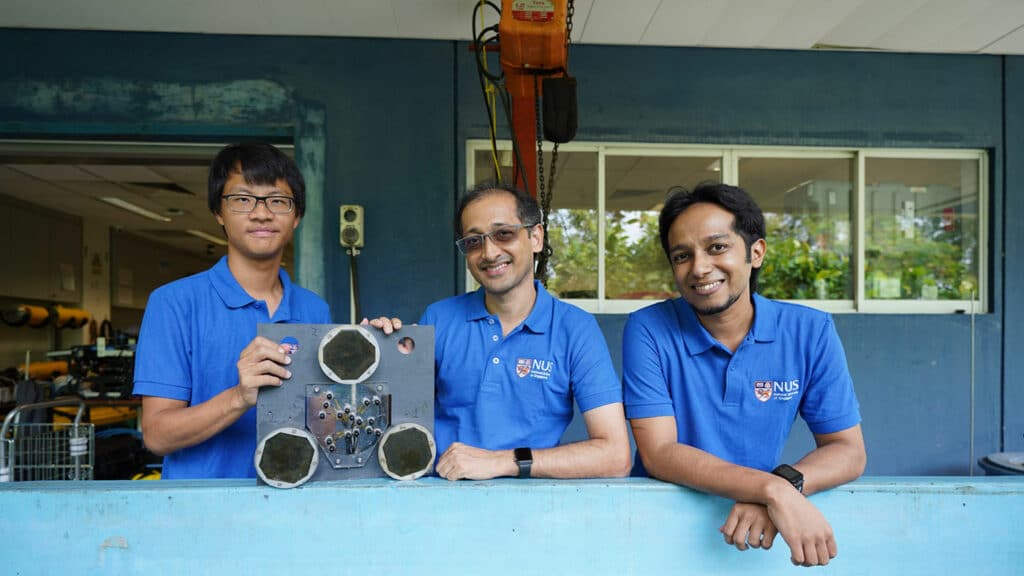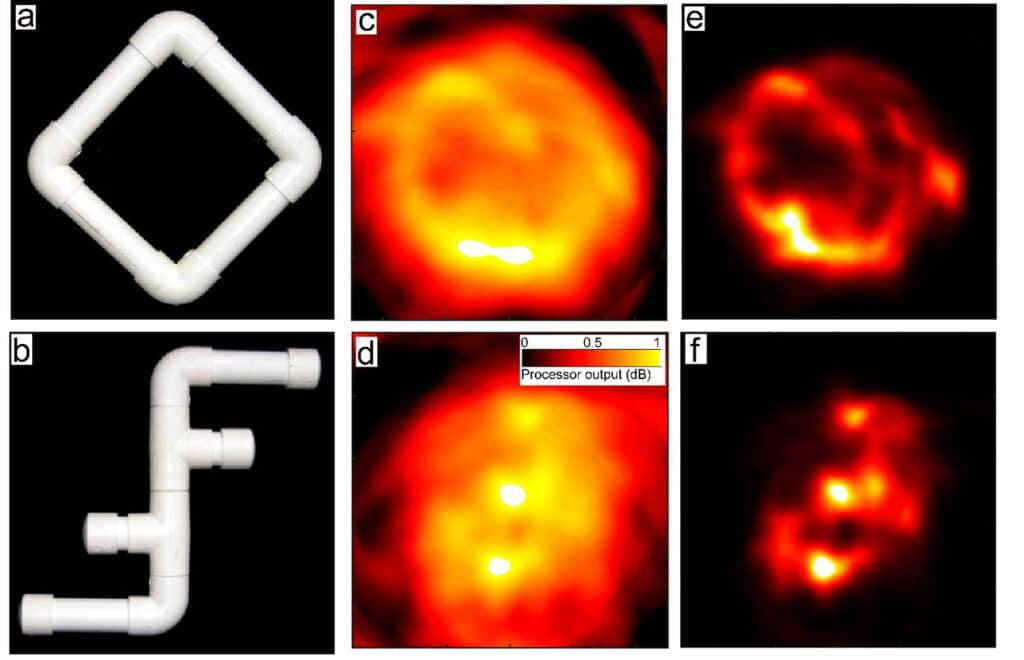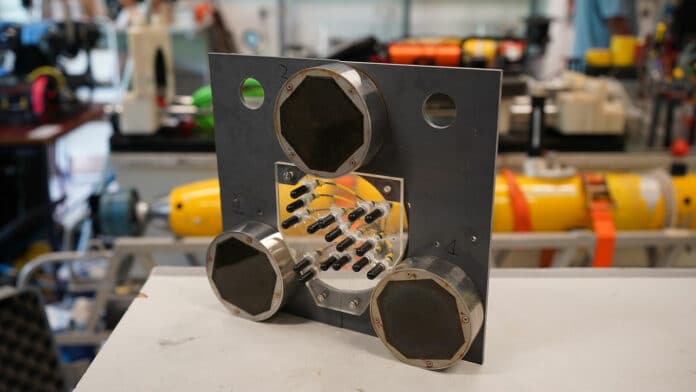Underwater imaging sonars are an essential technology for underwater exploration and navigation and have been in use for many decades in several applications. Despite their utility, underwater imaging sonars are not a reasonable option for some applications due to their bulk and hefty price tags.
Now, researchers at the National University of Singapore (NUS) have developed a dolphin-inspired compact sonar with a novel echo processing algorithm that allows for clearer visual imaging underwater compared to the conventional signal processing method of visualizing sound echoes.
Compared to other sonars of similar sizes and purposes, the new sonar device provides a better trade-off between sonar-image clarity, the number of sensors, and the size of the sensor array used. Conventional methods of processing sound echoes usually break down when sensors are too few or spread out. However, the sonar processing method developed by the NUS researchers will be able to extract information and still yield image clarity in such a scenario.

The sonar is about 25 cm in width and around the size of a dolphin’s head. The device emits sharp, impulsive click sounds similar to a dolphin’s echolocation and uses a set of three transmitters to examine targets from different directions. The researchers then processed the sounds from both the dolphin and their sonar to visualize what the echoes revealed about the object’s shape.
To make the most of this new hardware, the team developed a novel processing algorithm that allowed the sonar to improve the visualization of the echoes. Based on the hypothesis that dolphins use prior information to process their echoes, the researchers incorporated prior information into their algorithm – specifically regarding the sparsity of the shapes under observation. This assumes that out of the space scanned, only a small percentage is occupied by the object.
“Using prior information, such as the idea of sparsity, is intuitive. It is something humans do all the time – we turn our understanding of reality into expectations that can speed up our inferences and decisions. For example, in the absence of other information, the human brain and vision system tend to assume that in an image, the light on an object will be falling from above,” said Dr. Hari Vishnu, Senior Research Fellow at NUS Tropical Marine Science Institute (TMSI).

The effectiveness of the software was demonstrated when it was able to visualize information from a dolphin’s sonar echoes when scanning an object, as well as sonar signals produced by their compact sonar. It was discovered that the new techniques could produce much clearer images from sonar signals, and the better resolution was also achievable more quickly than in the conventional approaches. The software is also able to generate visualizations with a mere three clicks from the sonar, thus allowing it to be operationally fast.
The new processing method could have potential benefits in underwater commercial or military sonar. The developers believe that their system could be used to scan the seabed to search for features to facilitate navigation. The sonar’s compactness also makes it suitable for deployment on small underwater vehicles and robots for oceanic explorations.
Journal reference:
- Hari Vishnu, Matthias Hoffmann-Kuhnt, Mandar Chitre, Abel Ho and Eszter Matrai. A dolphin-inspired compact sonar for underwater acoustic imaging. Communications Engineering, 2022; DOI: 10.1038/s44172-022-00010-x
